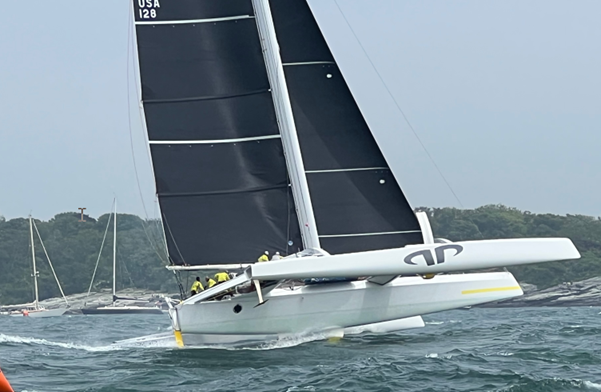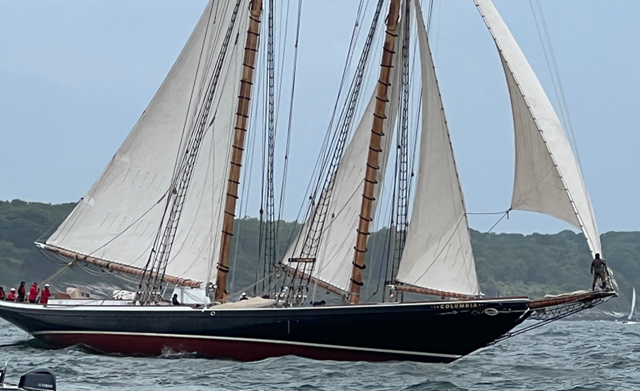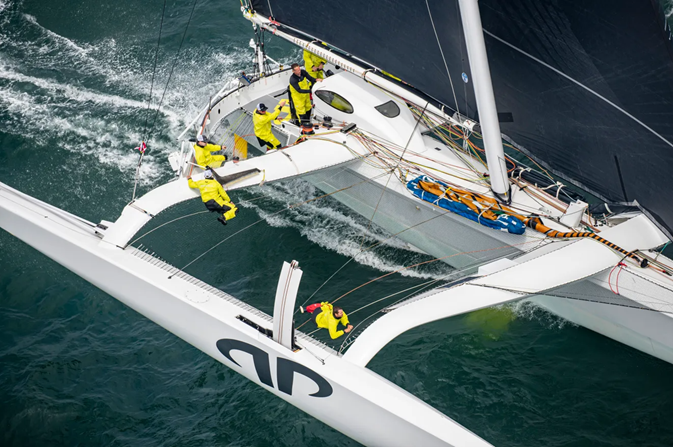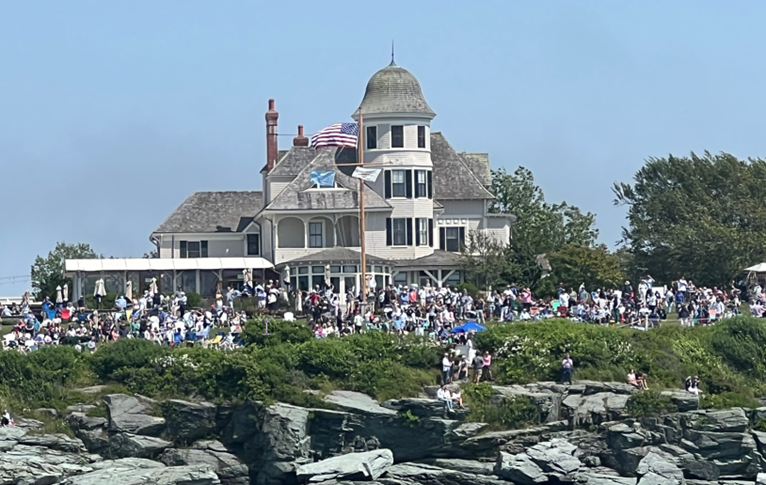Bermuda Race Speed Record: Man Lost Overboard

Argo is the first-ever Saturday night finisher in the history of the storied Bermuda Race, which is co-organized by the Cruising Club of America and the Royal Bermuda Yacht Club. Argo averaged 19.24 knots while setting the multihull course record and sailed mainly to the west of rhumb line and took advantage of a meander in the Gulf Stream that gave it a favorable boost towards Bermuda.
Watching the boat do its pre-race preps, one could see the mast canted heavily to starboard, indicating the crew knew it would be a starboard tack slog until they got within sight of Bermuda. The only two maneuvers were a tack to port and one back to starboard to the finish line off St. David’s Lighthouse in the final 10 miles of the course.

Swept Overboard
After extended effort, Golder’s body was recovered by the crew and the vessel returned to the mainland. Next of kin has been informed. In the press release, race organized committee, the Cruising Club of America and the Royal Bermuda Yacht Club offered condolences to the family and crew of Golder.
It should be pointed out that perhaps no offshore sailing race in the U.S. has a more comprehensive pre-race safety education program than the Bermuda Race. Day-long workshops were conducted on weekends covering different areas of safety, including damage control and man overboard drills. We are told that at least 30% of each boat’s crew had to take the course before the boat could be certified to start.
185 Starters
There were 185 starters broken down into 19 different classes for the fleet. The longest boat in the race was the 141’ (42.97 m) steel-hull schooner Columbia and the smallest boat was the 32’ (9.75 m) fiberglass sloop Selkie, which was in one of two double-handed classes. By permitting nearly any type of boat longer than 32’ in the race and by allowing double-handed crews, the Bermuda Race committee encouraged the widest participation possible. The Bermuda Race is generally considered to be the premier offshore racing event on the American East Coast.

A Brief History
Thomas Fleming Day, editor of The Rudder magazine (founded in 1891), the first boating magazine in the U.S., started the Bermuda Race in 1906 to prove that small sailboats could be as seaworthy and safe as large vessels. “The danger of the sea for generations has been preached by the ignorant,” said Day, as he took aim at yacht racing’s governing Poohbahs at the time who were wealthy yachtsmen who owned boats longer than 80’ (24.38 m). Certain that an ocean race would be enjoyable and safe — and develop better sailors and better boats — Day founded and promoted the Bermuda Race. The first race also had the first woman skipper, Thora Lund Robinson.


